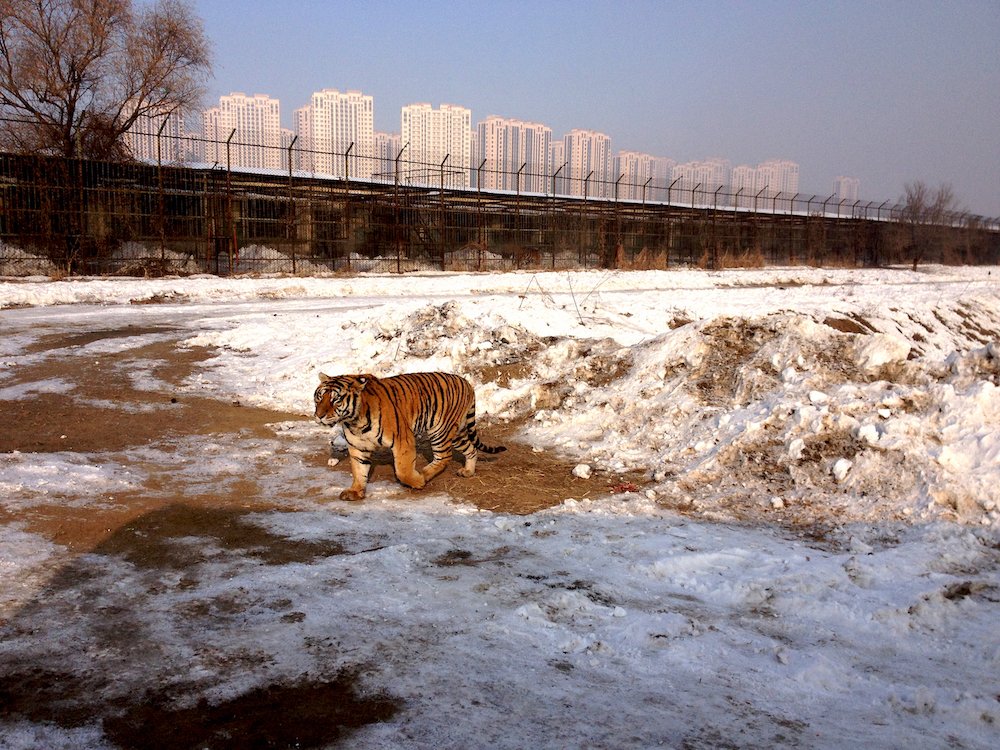Harbin Siberian Tiger Park
The Harbin Siberian Tiger Park...well, it was one part kind of cool, two parts horribly depressing, and one part why are the Chinese hooting at the tigers like owls? It's one of those things that after having lived in China for four months, we basically knew what to expect and already felt like we needed to take a shower after handing money over to such an organization before seeing a single large, striped cat capable of knocking a puny human's head off in a single blow. If you have a feeble heart, wear rose-tinted glasses, or have a Peta membership, don't come.
But if you're up to it, I would venture to say it's one of the most Chinese experiences you could have. The tiger park is a monument to China's Gilded Age - a 356-acre plot of land that proves you can do anything in China if you have the money and an idea. If you read this article, blatantly written by someone who is either affiliated with the park or hasn't been there, only 89 acres are allotted for about 30 adult tigers. The dwindling natural habitat of tigers in Russia and northern China has a density of about 1.2 tigers per every 39 square miles. If you do the simple math, that's about 0.55 square miles for the 30 cats. Not good.
Further cementing China as a wild, wild West just waiting for your cash to unlock unknown pleasures is the option to throw an animal in with the tigers and watch it be ripped to shreds. There's a menu near the ticket office.
“Jokes about the similarities to Jurassic Park result in nervous laughter, mainly because Jurassic Park was probably much safer.”
Beef: 10 yuan
Domestic Chicken: 5o yuan
Domestic Duck: 100 yuan
Pheasant: 100 yuan
Sheep: 600 yuan
Cattle: 1,500 yuan
We passed.
Equipped with this knowledge, we exit the cab at the nearly deserted park entrance. We drop 100 RMB each - 90 for general admission and 10 for the bus ride through the compound - and stand around, admiring the tacky cartoon-tiger statues and faux rocks. Soon, we are on the bus. Flimsy wire covers the windows. The bus pulls up to a gate, which opens and closes behind us. Then another gate opens to let us into an area called 'Adult Tiger Training Area'. Jokes about the similarities to Jurassic Park result in nervous laughter, mainly because Jurassic Park was probably much safer. Chicken wire is better than no wire.
Then, the tigers. Most are sleeping, a few are walking and the only cats running were avoiding being hit by our driver, honking away at all the tigers in the path as if we were on any typical Chinese road. Apart from this daily stress of not becoming roadkill and/or damaging the bus, they seemed healthy and comfortable...that is until we saw the younger tigers' habitat. A small wasteland of a fenced-in area with tiny cages against the main compound building. Most were pacing along the fence.
Probably the worst part of the experience was seeing animals that clearly did not belong in Siberia, in (basically) Siberia. Near the end of the bus journey, Kate exclaimed, "A pile of lions!" It was a literal pile of African lions, huddled together for warmth. Next on the list of animals that do not belong outside in Harbin, China's brutal winters was a jaguar, pacing about a 20 ft x 20 ft area with a concrete floor, and a cheetah. A fucking cheetah. Seeing it lying there, clearly shivering, while people taunted it was the end. The end of any enjoyment to be had and, thankfully, the end of the park.
I realize that to many people, I'm being a killjoy. But the fact of the matter is, despite how few chances we have to see or do something in life, our actions can have an impact, whether it be negative, positive, or too complicated to ever know. This is a grey area of travel that I haven't really experienced until I came to China. There are a lot of interesting things to see but at a cost. I learned at the tiger park that it's not always money. ◉
Written by Seth Barham










